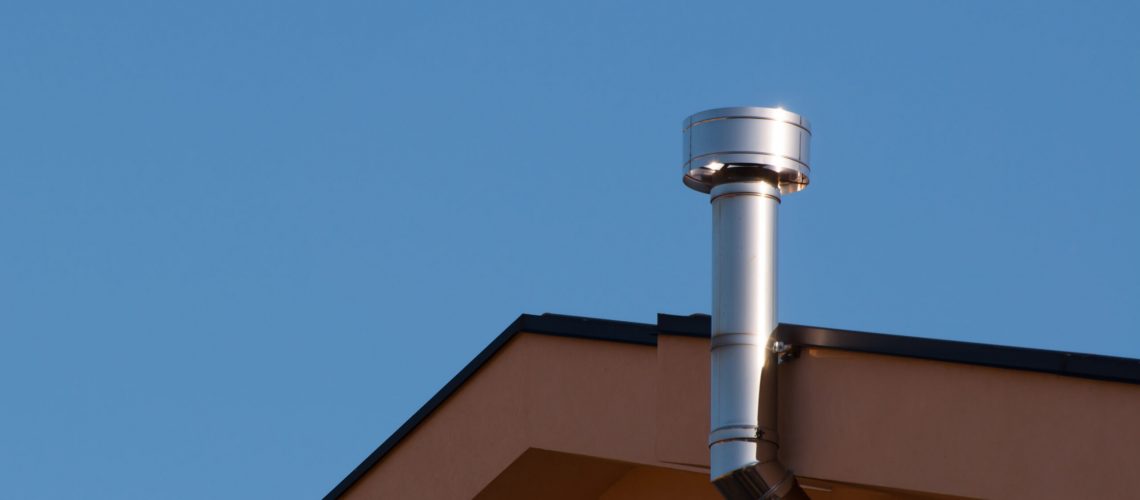Flues and chimneys are fundamental in the safe operation of your appliance. There are different categories of flues; they come in many shapes, sizes and configurations. A boiler flue can go up vertically or routed horizontally with bends, where permitted, but never downwards. In this blog we discuss
Two main functions of flues and chimneys
There are two functions a flue performs: expel flue gases (or products of consumption) and draw in fresh clean air for combustion. Gas provides heat when burning, which releases a mixture of chemicals, primarily Carbon Dioxide CO2 and Water Vapour H2O. They release these products of combustion into the atmosphere via the flue. Therefore, it is important the flue takes the easiest and safest route possible, with minimal changes of direction. Some flues carry both the flue gases and the clean air together in two separate tubes or one large tube with a smaller tube inside. Other flues or chimneys expel only the products of consumption whilst drawing fresh air local to the appliance. In these circumstances, it requires a permanent source of ventilation.
Regulations for installation of flues and chimneys
The best place to start with any boiler flue installation is the manufacturer’s instructions. The boiler manufacturer will adhere to the regulations in place in each country or region, so the instructions will identify where it is suitable to locate the flue. Any boiler installation must meet the regulations before handover and signed off by a Gas Safe Registered Engineer. At Parkstone Yorkshire, all our engineers are Gas Safe Registered. It must be possible to inspect the flue or chimney throughout its length, including termination to outside. The flue installation must consider the position of doors and windows, plus other openings such as vents. They must avoid restrictions or coverings; foliage from trees can block the products of combustion leaving the flue. Consideration for other flues or chimneys is vital to ensure the flue gases expel into clean air.
Flues and chimneys materials
Flues are rigid structures to ensure the safe removal of products of combustion. They make flues from metal, plastic and brick (chimneys). Boilers use aluminium or stainless steel flues to protect against corrosion when expelling the flue gases. The solid tubes easily connect, and flues horizontally or vertically with the correct supports in place. Plastic flues appear on condensing boilers where a manufacturer has deemed safe to use for lower temperature flue gases. These are useful if flue routes are awkward. Brick flues or chimneys are vertical in construction, drawing air in from the surrounding space to burn the gas. In some chimneys, we place liners made of flexible metal inside the chimney to protect the integrity of the chimney from the harsh flue gases. This also improves the function of the chimney.
If you have any queries about a flue or chimney and would like professional advice, please get in touch.

